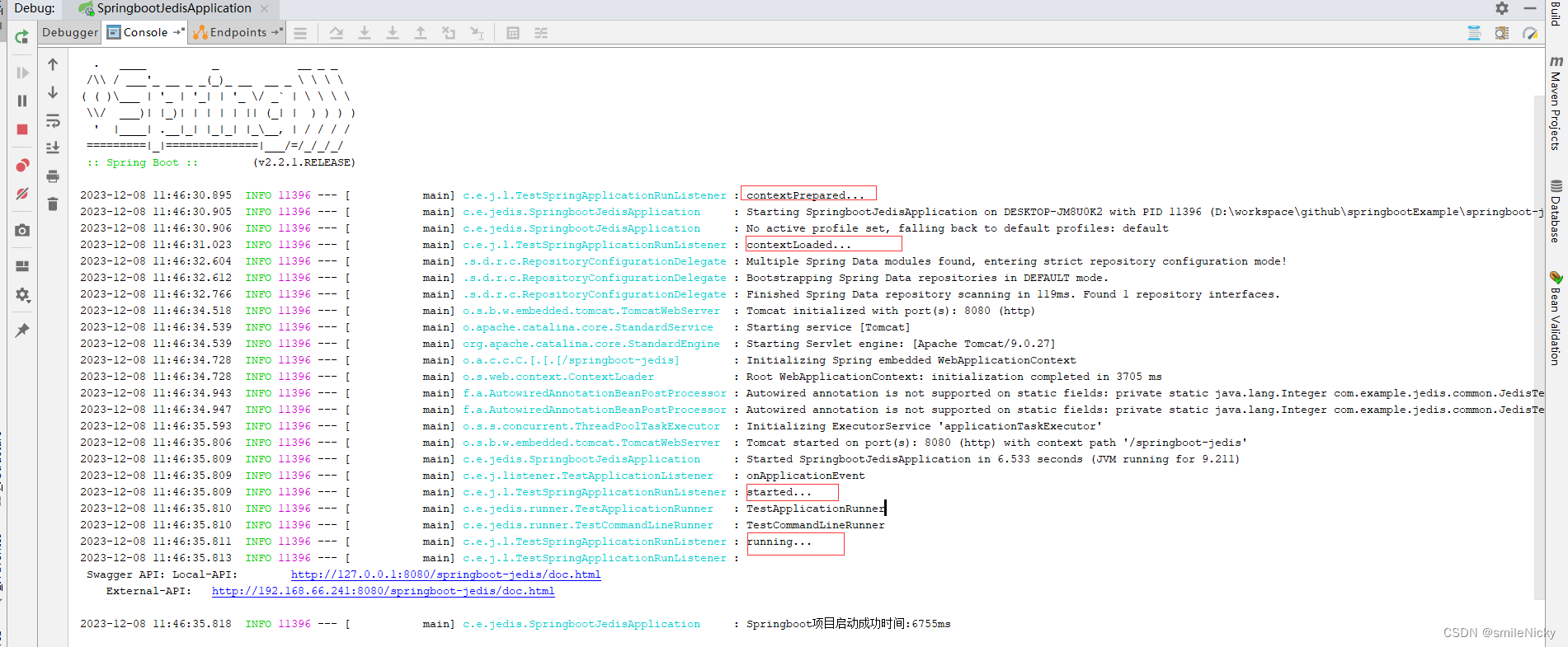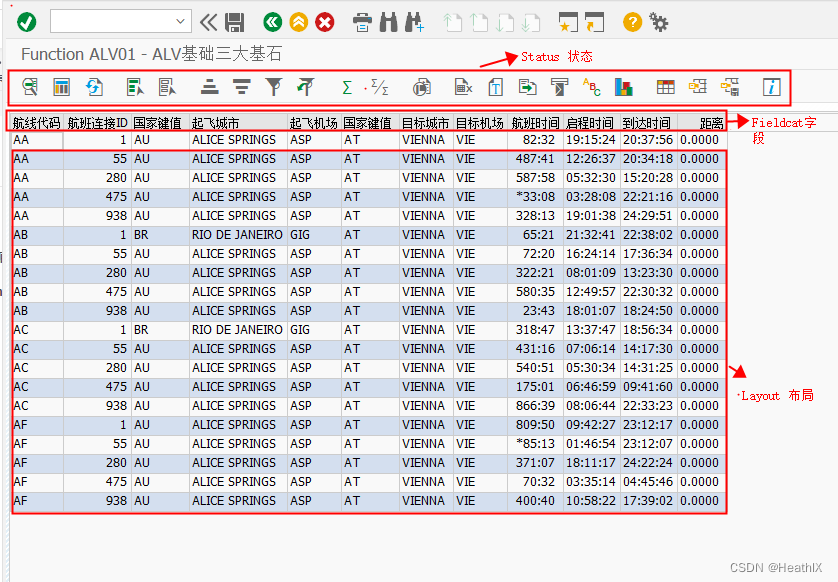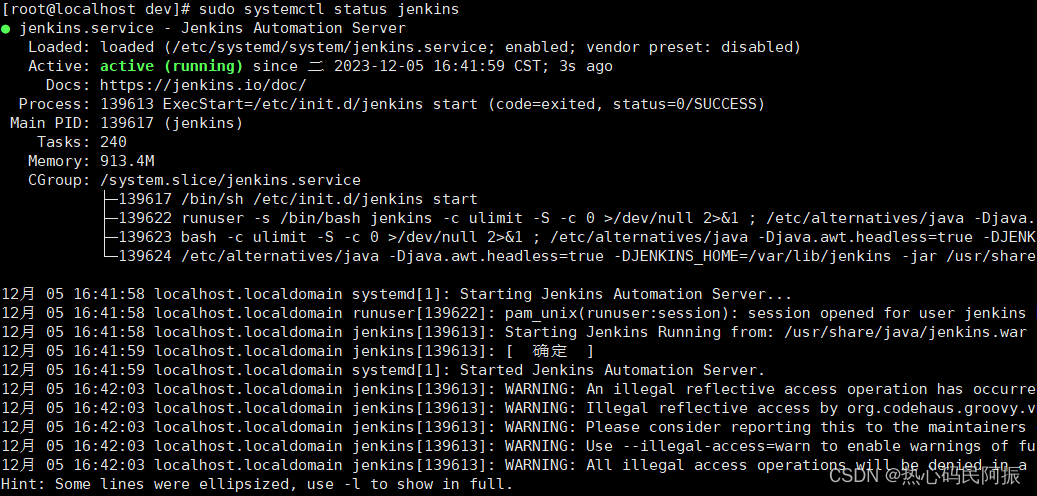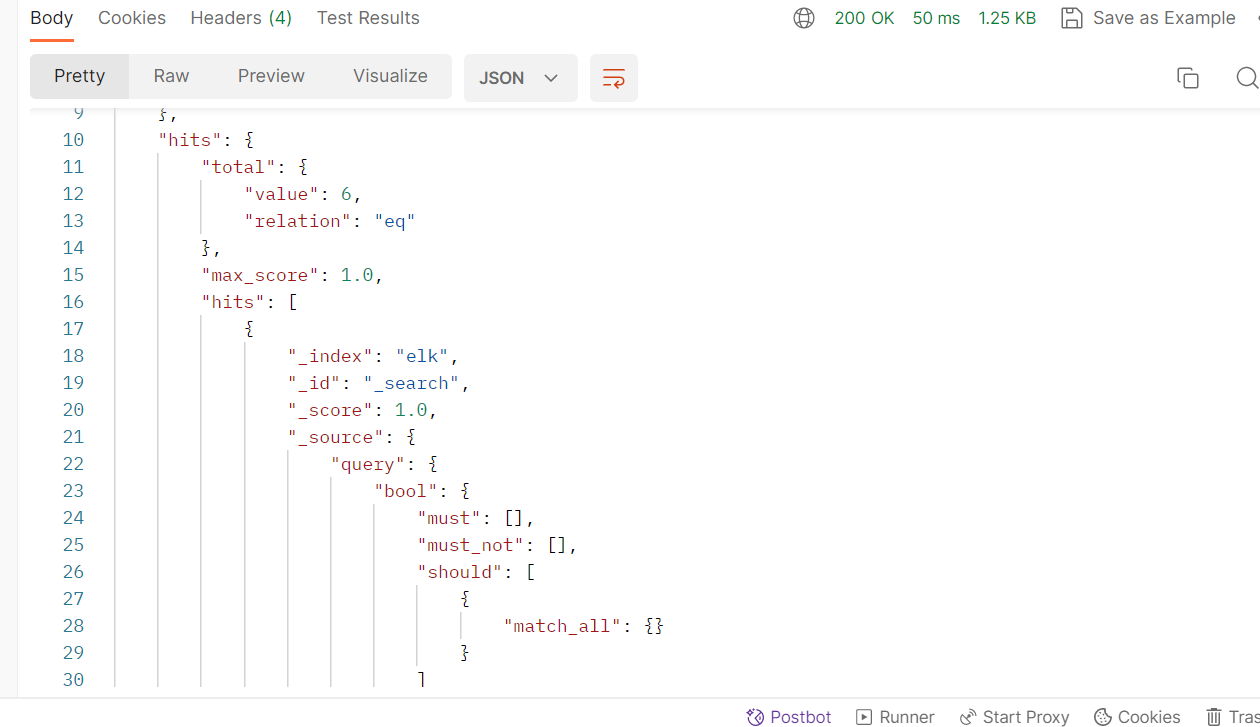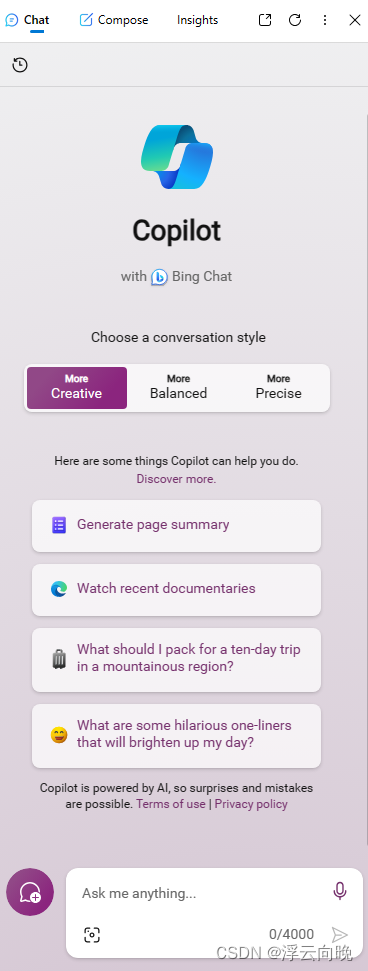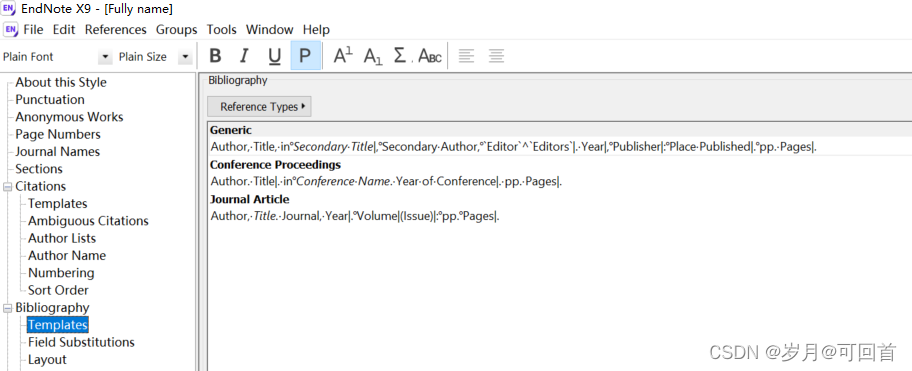一、前言
在本系列文章:
Spring Security 6.x 系列(4)—— 基于过滤器链的源码分析(一)
中着重分析了Spring Security在Spring Boot自动配置、 DefaultSecurityFilterChain和FilterChainProxy 的构造过程。
Spring Security 6.x 系列(7)—— SecurityBuilder 继承链源码分析
中详细分析了Spring Security中WebSecurity、HttpSecurity、AuthenticationManagerBuilder 三个构造器的公共继承链。
Spring Security 6.x 系列(8)—— SecurityConfigurer 配置器及其分支实现源码分析(一)
中分析SecurityConfigurer配置器及其主要分支实现。
Spring Security 6.x 系列(9)—— 基于过滤器链的源码分析(二)
着重分析了@EnableGlobalAuthentication注解的作用、对AuthenticationConfiguration构造AuthenticationManager过程和上文中未介绍的GlobalAuthenticationConfigurerAdapter 配置器的五个分支实现进行了详细的说明。
今天我们就从未被介绍的SecurityConfigurerAdapter配置器的具体分支实现进行展开。
二、SecurityConfigurerAdapter
SecurityConfigurerAdapter在上文中有过详解介绍,它是SecurityConfigurer的基类,它允许子类仅实现它们感兴趣的方法。它还提供了使用 SecurityConfigurer以及完成后获取正在配置的SecurityBuilder(构造器)的访问权限的机制。
SecurityConfigurerAdapter 的实现主要有三大类:
UserDetailsAwareConfigurerAbstractHttpConfigurerLdapAuthenticationProviderConfigurer
考虑到 LDAP 现在使用很少,所以重点介绍前两个。
三、UserDetailsAwareConfigurer
这个类名就能大概知道是和用户详细信息配置有关。
再通过继承关系图,看看UserDetailsAwareConfigurer的顶层架构设计:

UserDetailsAwareConfigurer是一个抽象类,源码比较简单:
/**
* Base class that allows access to the {@link UserDetailsService} for using as a default
* value with {@link AuthenticationManagerBuilder}.
*
* @param <B> the type of the {@link ProviderManagerBuilder}
* @param <U> the type of {@link UserDetailsService}
* @author Rob Winch
*/
public abstract class UserDetailsAwareConfigurer<B extends ProviderManagerBuilder<B>, U extends UserDetailsService>
extends SecurityConfigurerAdapter<AuthenticationManager, B> {
/**
* Gets the {@link UserDetailsService} or null if it is not available
* @return the {@link UserDetailsService} or null if it is not available
*/
public abstract U getUserDetailsService();
}
通过源码我们可知:
-
泛型
U继承了UserDetailsService接口,也就意味着
getUserDetailsService()方法返回的对象肯定是UserDetailsService接口的实现。 -
泛型
B继承了ProviderManagerBuilder接口,ProviderManagerBuilder构造器的作用是用来构建AuthenticationManager对象,可就意味UserDetailsAwareConfigurer(配置器)用来配置ProviderManagerBuilder构造器。
3.1 AbstractDaoAuthenticationConfigurer
AbstractDaoAuthenticationConfigurer也是一个抽象类,是模版模式:
/**
* Allows configuring a {@link DaoAuthenticationProvider}
*
* @param <B> the type of the {@link SecurityBuilder}
* @param <C> the type of {@link AbstractDaoAuthenticationConfigurer} this is
* @param <U> The type of {@link UserDetailsService} that is being used
* @author Rob Winch
* @since 3.2
*/
public abstract class AbstractDaoAuthenticationConfigurer<B extends ProviderManagerBuilder<B>, C extends AbstractDaoAuthenticationConfigurer<B, C, U>, U extends UserDetailsService>
extends UserDetailsAwareConfigurer<B, U> {
// 声明了一个 provider
private DaoAuthenticationProvider provider = new DaoAuthenticationProvider();
// 声明了一个 userDetailsService 的泛型属性
private final U userDetailsService;
/**
* 创建一个实例
* @param userDetailsService,userDetailsService的类型可以是UserDetailsService或者UserDetailsPasswordService
*/
AbstractDaoAuthenticationConfigurer(U userDetailsService) {
this.userDetailsService = userDetailsService;
this.provider.setUserDetailsService(userDetailsService);
if (userDetailsService instanceof UserDetailsPasswordService) {
this.provider.setUserDetailsPasswordService((UserDetailsPasswordService) userDetailsService);
}
}
/**
* Adds an {@link ObjectPostProcessor} for this class.
* @param objectPostProcessor
* @return the {@link AbstractDaoAuthenticationConfigurer} for further customizations
*/
@SuppressWarnings("unchecked")
public C withObjectPostProcessor(ObjectPostProcessor<?> objectPostProcessor) {
addObjectPostProcessor(objectPostProcessor);
return (C) this;
}
/**
* Allows specifying the {@link PasswordEncoder} to use with the
* {@link DaoAuthenticationProvider}. The default is to use plain text.
* @param passwordEncoder The {@link PasswordEncoder} to use.
* @return the {@link AbstractDaoAuthenticationConfigurer} for further customizations
*/
@SuppressWarnings("unchecked")
public C passwordEncoder(PasswordEncoder passwordEncoder) {
this.provider.setPasswordEncoder(passwordEncoder);
return (C) this;
}
public C userDetailsPasswordManager(UserDetailsPasswordService passwordManager) {
this.provider.setUserDetailsPasswordService(passwordManager);
return (C) this;
}
@Override
public void configure(B builder) throws Exception {
this.provider = postProcess(this.provider);
// 向builder添加provider(配置构造器阶段)
builder.authenticationProvider(this.provider);
}
/**
* Gets the {@link UserDetailsService} that is used with the
* {@link DaoAuthenticationProvider}
* @return the {@link UserDetailsService} that is used with the
* {@link DaoAuthenticationProvider}
*/
@Override
public U getUserDetailsService() {
return this.userDetailsService;
}
}
通过源码我们可知:
AbstractDaoAuthenticationConfigurer初始时创建了一个DaoAuthenticationProvider类型的AuthenticationProvider实例。- 为使用者提供设置
DaoAuthenticationProvider属性UserDetailsService的功能并指定类型为:UserDetailsService/U serDetailsPasswordService。 - 为使用者提供设置
DaoAuthenticationProvider属性PasswordEncoder功能; - 为使用者提供设置对象后置处处理器的功能。
AbstractDaoAuthenticationConfigurer配置构造器对应的初始化阶段方法为空。AbstractDaoAuthenticationConfigurer配置构造器对应的配置阶段方法:- 对
DaoAuthenticationProvider执行后置处理 - 将
DaoAuthenticationProvider添加到构造器中
- 对
3.2 DaoAuthenticationConfigurer
DaoAuthenticationConfigurer继承自 AbstractDaoAuthenticationConfigurer,在构造方法中调用AbstractDaoAuthenticationConfigurer的构造方法。
/**
* Allows configuring a {@link DaoAuthenticationProvider}
*
* @param <B> The type of {@link ProviderManagerBuilder} this is
* @param <U> The type of {@link UserDetailsService} that is being used
* @author Rob Winch
* @since 3.2
*/
public class DaoAuthenticationConfigurer<B extends ProviderManagerBuilder<B>, U extends UserDetailsService>
extends AbstractDaoAuthenticationConfigurer<B, DaoAuthenticationConfigurer<B, U>, U> {
/**
* Creates a new instance
* @param userDetailsService
*/
public DaoAuthenticationConfigurer(U userDetailsService) {
super(userDetailsService);
}
}
3.3 UserDetailsServiceConfigurer
UserDetailsServiceConfigurer继承了AbstractDaoAuthenticationConfigurer,并重写了AbstractDaoAuthenticationConfigurer中的configure方法,在configure方法执行之前加入了initUserDetailsService方法,以方便开发时按照自己的方式去初始化 UserDetailsService。这里的initUserDetailsService方法是空的,会交于子类进行具体实现,也是模版模式。
/**
* Allows configuring a {@link UserDetailsService} within a
* {@link AuthenticationManagerBuilder}.
*
* @param <B> the type of the {@link ProviderManagerBuilder}
* @param <C> the {@link UserDetailsServiceConfigurer} (or this)
* @param <U> the type of UserDetailsService being used to allow for returning the
* concrete UserDetailsService.
* @author Rob Winch
* @since 3.2
*/
public class UserDetailsServiceConfigurer<B extends ProviderManagerBuilder<B>, C extends UserDetailsServiceConfigurer<B, C, U>, U extends UserDetailsService>
extends AbstractDaoAuthenticationConfigurer<B, C, U> {
/**
* Creates a new instance
* @param userDetailsService the {@link UserDetailsService} that should be used
*/
public UserDetailsServiceConfigurer(U userDetailsService) {
super(userDetailsService);
}
@Override
public void configure(B builder) throws Exception {
initUserDetailsService();
super.configure(builder);
}
/**
* Allows subclasses to initialize the {@link UserDetailsService}. For example, it
* might add users, initialize schema, etc.
*/
protected void initUserDetailsService() throws Exception {
}
}
3.4 UserDetailsManagerConfigurer
UserDetailsManagerConfigurer继承了UserDetailsServiceConfigurer,并实现了 UserDetailsServiceConfigurer中定义的initUserDetailsService空方法,具体的实现逻辑就是将UserDetailsBuilder所构建出来的 UserDetails以及提前准备好的UserDetails中的用户存储到UserDetailsService中。
在实例构造上进一步限制了父类中的U userDetailsService的类型为UserDetailsManager。

该类同时添加 withUser方法用来添加用户,同时还增加了一个UserDetailsBuilder用来构建用户,这些逻辑都比较简单,大家可以自行查看。
/**
* Base class for populating an
* {@link org.springframework.security.config.annotation.authentication.builders.AuthenticationManagerBuilder}
* with a {@link UserDetailsManager}.
*
* @param <B> the type of the {@link SecurityBuilder} that is being configured
* @param <C> the type of {@link UserDetailsManagerConfigurer}
* @author Rob Winch
* @since 3.2
*/
public class UserDetailsManagerConfigurer<B extends ProviderManagerBuilder<B>, C extends UserDetailsManagerConfigurer<B, C>>
extends UserDetailsServiceConfigurer<B, C, UserDetailsManager> {
private final List<UserDetailsBuilder> userBuilders = new ArrayList<>();
private final List<UserDetails> users = new ArrayList<>();
protected UserDetailsManagerConfigurer(UserDetailsManager userDetailsManager) {
super(userDetailsManager);
}
/**
* Populates the users that have been added.
* @throws Exception
*/
@Override
protected void initUserDetailsService() throws Exception {
for (UserDetailsBuilder userBuilder : this.userBuilders) {
getUserDetailsService().createUser(userBuilder.build());
}
for (UserDetails userDetails : this.users) {
getUserDetailsService().createUser(userDetails);
}
}
/**
* Allows adding a user to the {@link UserDetailsManager} that is being created. This
* method can be invoked multiple times to add multiple users.
* @param userDetails the user to add. Cannot be null.
* @return the {@link UserDetailsBuilder} for further customizations
*/
@SuppressWarnings("unchecked")
public final C withUser(UserDetails userDetails) {
this.users.add(userDetails);
return (C) this;
}
/**
* Allows adding a user to the {@link UserDetailsManager} that is being created. This
* method can be invoked multiple times to add multiple users.
* @param userBuilder the user to add. Cannot be null.
* @return the {@link UserDetailsBuilder} for further customizations
*/
@SuppressWarnings("unchecked")
public final C withUser(User.UserBuilder userBuilder) {
this.users.add(userBuilder.build());
return (C) this;
}
/**
* Allows adding a user to the {@link UserDetailsManager} that is being created. This
* method can be invoked multiple times to add multiple users.
* @param username the username for the user being added. Cannot be null.
* @return the {@link UserDetailsBuilder} for further customizations
*/
@SuppressWarnings("unchecked")
public final UserDetailsBuilder withUser(String username) {
UserDetailsBuilder userBuilder = new UserDetailsBuilder((C) this);
userBuilder.username(username);
this.userBuilders.add(userBuilder);
return userBuilder;
}
/**
* Builds the user to be added. At minimum the username, password, and authorities
* should provided. The remaining attributes have reasonable defaults.
*/
public final class UserDetailsBuilder {
private UserBuilder user;
private final C builder;
/**
* Creates a new instance
* @param builder the builder to return
*/
private UserDetailsBuilder(C builder) {
this.builder = builder;
}
/**
* Returns the {@link UserDetailsManagerConfigurer} for method chaining (i.e. to
* add another user)
* @return the {@link UserDetailsManagerConfigurer} for method chaining
*/
public C and() {
return this.builder;
}
/**
* Populates the username. This attribute is required.
* @param username the username. Cannot be null.
* @return the {@link UserDetailsBuilder} for method chaining (i.e. to populate
* additional attributes for this user)
*/
private UserDetailsBuilder username(String username) {
this.user = User.withUsername(username);
return this;
}
/**
* Populates the password. This attribute is required.
* @param password the password. Cannot be null.
* @return the {@link UserDetailsBuilder} for method chaining (i.e. to populate
* additional attributes for this user)
*/
public UserDetailsBuilder password(String password) {
this.user.password(password);
return this;
}
/**
* Populates the roles. This method is a shortcut for calling
* {@link #authorities(String...)}, but automatically prefixes each entry with
* "ROLE_". This means the following:
*
* <code>
* builder.roles("USER","ADMIN");
* </code>
*
* is equivalent to
*
* <code>
* builder.authorities("ROLE_USER","ROLE_ADMIN");
* </code>
*
* <p>
* This attribute is required, but can also be populated with
* {@link #authorities(String...)}.
* </p>
* @param roles the roles for this user (i.e. USER, ADMIN, etc). Cannot be null,
* contain null values or start with "ROLE_"
* @return the {@link UserDetailsBuilder} for method chaining (i.e. to populate
* additional attributes for this user)
*/
public UserDetailsBuilder roles(String... roles) {
this.user.roles(roles);
return this;
}
/**
* Populates the authorities. This attribute is required.
* @param authorities the authorities for this user. Cannot be null, or contain
* null values
* @return the {@link UserDetailsBuilder} for method chaining (i.e. to populate
* additional attributes for this user)
* @see #roles(String...)
*/
public UserDetailsBuilder authorities(GrantedAuthority... authorities) {
this.user.authorities(authorities);
return this;
}
/**
* Populates the authorities. This attribute is required.
* @param authorities the authorities for this user. Cannot be null, or contain
* null values
* @return the {@link UserDetailsBuilder} for method chaining (i.e. to populate
* additional attributes for this user)
* @see #roles(String...)
*/
public UserDetailsBuilder authorities(List<? extends GrantedAuthority> authorities) {
this.user.authorities(authorities);
return this;
}
/**
* Populates the authorities. This attribute is required.
* @param authorities the authorities for this user (i.e. ROLE_USER, ROLE_ADMIN,
* etc). Cannot be null, or contain null values
* @return the {@link UserDetailsBuilder} for method chaining (i.e. to populate
* additional attributes for this user)
* @see #roles(String...)
*/
public UserDetailsBuilder authorities(String... authorities) {
this.user.authorities(authorities);
return this;
}
/**
* Defines if the account is expired or not. Default is false.
* @param accountExpired true if the account is expired, false otherwise
* @return the {@link UserDetailsBuilder} for method chaining (i.e. to populate
* additional attributes for this user)
*/
public UserDetailsBuilder accountExpired(boolean accountExpired) {
this.user.accountExpired(accountExpired);
return this;
}
/**
* Defines if the account is locked or not. Default is false.
* @param accountLocked true if the account is locked, false otherwise
* @return the {@link UserDetailsBuilder} for method chaining (i.e. to populate
* additional attributes for this user)
*/
public UserDetailsBuilder accountLocked(boolean accountLocked) {
this.user.accountLocked(accountLocked);
return this;
}
/**
* Defines if the credentials are expired or not. Default is false.
* @param credentialsExpired true if the credentials are expired, false otherwise
* @return the {@link UserDetailsBuilder} for method chaining (i.e. to populate
* additional attributes for this user)
*/
public UserDetailsBuilder credentialsExpired(boolean credentialsExpired) {
this.user.credentialsExpired(credentialsExpired);
return this;
}
/**
* Defines if the account is disabled or not. Default is false.
* @param disabled true if the account is disabled, false otherwise
* @return the {@link UserDetailsBuilder} for method chaining (i.e. to populate
* additional attributes for this user)
*/
public UserDetailsBuilder disabled(boolean disabled) {
this.user.disabled(disabled);
return this;
}
UserDetails build() {
return this.user.build();
}
}
}
3.5 JdbcUserDetailsManagerConfigurer
JdbcUserDetailsManagerConfigurer继承了UserDetailsManagerConfigurer,在父类的基础上补充了 DataSource对象,同时还提供了相应的数据库查询方法。
/**
* Configures an
* {@link org.springframework.security.config.annotation.authentication.builders.AuthenticationManagerBuilder}
* to have JDBC authentication. It also allows easily adding users to the database used
* for authentication and setting up the schema.
*
* <p>
* The only required method is the {@link #dataSource(javax.sql.DataSource)} all other
* methods have reasonable defaults.
*
* @param <B> the type of the {@link ProviderManagerBuilder} that is being configured
* @author Rob Winch
* @since 3.2
*/
public class JdbcUserDetailsManagerConfigurer<B extends ProviderManagerBuilder<B>>
extends UserDetailsManagerConfigurer<B, JdbcUserDetailsManagerConfigurer<B>> {
private DataSource dataSource;
private List<Resource> initScripts = new ArrayList<>();
public JdbcUserDetailsManagerConfigurer(JdbcUserDetailsManager manager) {
super(manager);
}
public JdbcUserDetailsManagerConfigurer() {
this(new JdbcUserDetailsManager());
}
/**
* Populates the {@link DataSource} to be used. This is the only required attribute.
* @param dataSource the {@link DataSource} to be used. Cannot be null.
* @return The {@link JdbcUserDetailsManagerConfigurer} used for additional
* customizations
*/
public JdbcUserDetailsManagerConfigurer<B> dataSource(DataSource dataSource) {
this.dataSource = dataSource;
getUserDetailsService().setDataSource(dataSource);
return this;
}
/**
* Sets the query to be used for finding a user by their username. For example:
*
* <code>
* select username,password,enabled from users where username = ?
* </code>
* @param query The query to use for selecting the username, password, and if the user
* is enabled by username. Must contain a single parameter for the username.
* @return The {@link JdbcUserDetailsManagerConfigurer} used for additional
* customizations
*/
public JdbcUserDetailsManagerConfigurer<B> usersByUsernameQuery(String query) {
getUserDetailsService().setUsersByUsernameQuery(query);
return this;
}
/**
* Sets the query to be used for finding a user's authorities by their username. For
* example:
*
* <code>
* select username,authority from authorities where username = ?
* </code>
* @param query The query to use for selecting the username, authority by username.
* Must contain a single parameter for the username.
* @return The {@link JdbcUserDetailsManagerConfigurer} used for additional
* customizations
*/
public JdbcUserDetailsManagerConfigurer<B> authoritiesByUsernameQuery(String query) {
getUserDetailsService().setAuthoritiesByUsernameQuery(query);
return this;
}
/**
* An SQL statement to query user's group authorities given a username. For example:
*
* <code>
* select
* g.id, g.group_name, ga.authority
* from
* groups g, group_members gm, group_authorities ga
* where
* gm.username = ? and g.id = ga.group_id and g.id = gm.group_id
* </code>
* @param query The query to use for selecting the authorities by group. Must contain
* a single parameter for the username.
* @return The {@link JdbcUserDetailsManagerConfigurer} used for additional
* customizations
*/
public JdbcUserDetailsManagerConfigurer<B> groupAuthoritiesByUsername(String query) {
JdbcUserDetailsManager userDetailsService = getUserDetailsService();
userDetailsService.setEnableGroups(true);
userDetailsService.setGroupAuthoritiesByUsernameQuery(query);
return this;
}
/**
* A non-empty string prefix that will be added to role strings loaded from persistent
* storage (default is "").
* @param rolePrefix
* @return The {@link JdbcUserDetailsManagerConfigurer} used for additional
* customizations
*/
public JdbcUserDetailsManagerConfigurer<B> rolePrefix(String rolePrefix) {
getUserDetailsService().setRolePrefix(rolePrefix);
return this;
}
/**
* Defines the {@link UserCache} to use
* @param userCache the {@link UserCache} to use
* @return the {@link JdbcUserDetailsManagerConfigurer} for further customizations
*/
public JdbcUserDetailsManagerConfigurer<B> userCache(UserCache userCache) {
getUserDetailsService().setUserCache(userCache);
return this;
}
@Override
protected void initUserDetailsService() throws Exception {
if (!this.initScripts.isEmpty()) {
getDataSourceInit().afterPropertiesSet();
}
super.initUserDetailsService();
}
@Override
public JdbcUserDetailsManager getUserDetailsService() {
return (JdbcUserDetailsManager) super.getUserDetailsService();
}
/**
* Populates the default schema that allows users and authorities to be stored.
* @return The {@link JdbcUserDetailsManagerConfigurer} used for additional
* customizations
*/
public JdbcUserDetailsManagerConfigurer<B> withDefaultSchema() {
this.initScripts.add(new ClassPathResource("org/springframework/security/core/userdetails/jdbc/users.ddl"));
return this;
}
protected DatabasePopulator getDatabasePopulator() {
ResourceDatabasePopulator dbp = new ResourceDatabasePopulator();
dbp.setScripts(this.initScripts.toArray(new Resource[0]));
return dbp;
}
private DataSourceInitializer getDataSourceInit() {
DataSourceInitializer dsi = new DataSourceInitializer();
dsi.setDatabasePopulator(getDatabasePopulator());
dsi.setDataSource(this.dataSource);
return dsi;
}
}
在实例构造上进一步限制了父类中的U userDetailsService的类型为JdbcUserDetailsManager。
JdbcUserDetailsManager的继承关系图:

3.6 InMemoryUserDetailsManagerConfigurer
InMemoryUserDetailsManagerConfigurer继承了UserDetailsManagerConfigurer,在实例构造上进一步限制了父类中的U userDetailsService的类型为InMemoryUserDetailsManager。
/**
* Configures an
* {@link org.springframework.security.config.annotation.authentication.builders.AuthenticationManagerBuilder}
* to have in memory authentication. It also allows easily adding users to the in memory
* authentication.
*
* @param <B> the type of the {@link ProviderManagerBuilder} that is being configured
* @author Rob Winch
* @since 3.2
*/
public class InMemoryUserDetailsManagerConfigurer<B extends ProviderManagerBuilder<B>>
extends UserDetailsManagerConfigurer<B, InMemoryUserDetailsManagerConfigurer<B>> {
/**
* Creates a new instance
*/
public InMemoryUserDetailsManagerConfigurer() {
super(new InMemoryUserDetailsManager(new ArrayList<>()));
}
}
InMemoryUserDetailsManager的继承关系图:

未完待续~~~~!!!!



![[架构之路-259]:目标系统 - 设计方法 - 软件工程 - 软件设计 - 架构设计 - 面向服务的架构SOA与微服务架构(以服务为最小的构建单位)](https://img-blog.csdnimg.cn/direct/81160562151d4a67afc82f4f1a48007c.png)


![队列排序:给定序列a,每次操作将a[1]移动到 从右往左第一个严格小于a[1]的元素的下一个位置,求能否使序列有序,若可以,求最少操作次数](https://img-blog.csdnimg.cn/direct/d00b9c3138bb48b7a5e3850fe91d6aa8.png)
